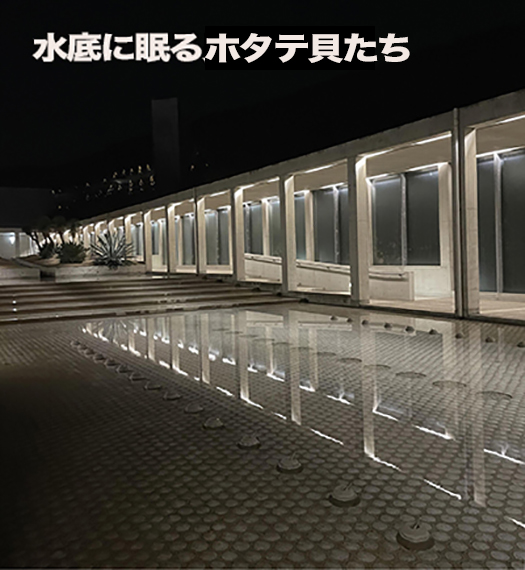
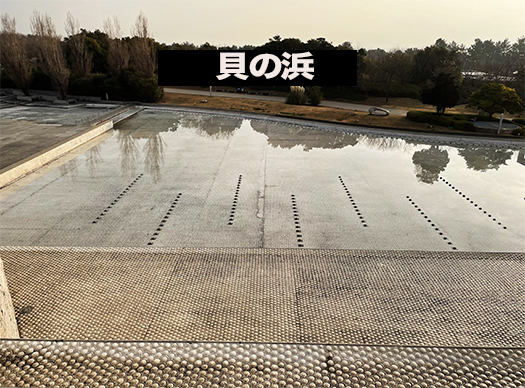
北海道の人間からすると安藤忠雄さんは評価が分かれる存在。北海道が地域を挙げ高断熱高気密住宅という地域社会運動に取り組んで必死の時に、断熱などにはほぼ無頓着にコンクリート打ち放しで型枠から「放したあとの面の表情の美感」を追求する制作プロセス情報が伝わってくる。美感のために「ガンガン叩く」のだ、というような情報。断熱性を差し置いてこだわる箇所がそこなのか、という距離感。
また安藤作品の住宅では施主さんは寒さに震えているという断片的なウワサを聞く。実際に熱画像撮影され暖気が「まっすぐ垂直に」上昇している写真も見たことがある。ほぼ屋外の熱環境。ちょっと別次元の熱環境空間への考え方と思わされた。
しかし一方そういう情報とは違う印象の事実とも出くわす。たとえばこの淡路夢舞台では北海道オホーツクの缶詰工場で廃棄されるばかりだったホタテ貝殻たち100万枚が第2の命の残照をこだまさせているという。1万㎡にも及ぶ水面の底で基盤的な風景を構成している。
北海道の自然からの重要な使者として淡路に降臨したとも受け取れる。安藤さんの設計思想がどうしてこのホタテ貝殻に注目し淡路島の地形復元の隠れた最大のホープとして採用したのか。単に自然再生の象徴としてなのか、あるいはもっと大きな意味合いがかれを動かしたのかは不明。だけど北海道人としてはある種、胸熱になる、こうした「心の仕掛け」を見せてくれる。
違和感を持つと同時に内面に訴えてくる建築人としてのある熱いものも感じざるを得ない。まことに二律背反的・アンビバレンツ。上の写真は水底でさざめいている北海道のホタテ貝たち。「おお、オホーツクを遠く離れて新たな命を生きているのか」みたいな。
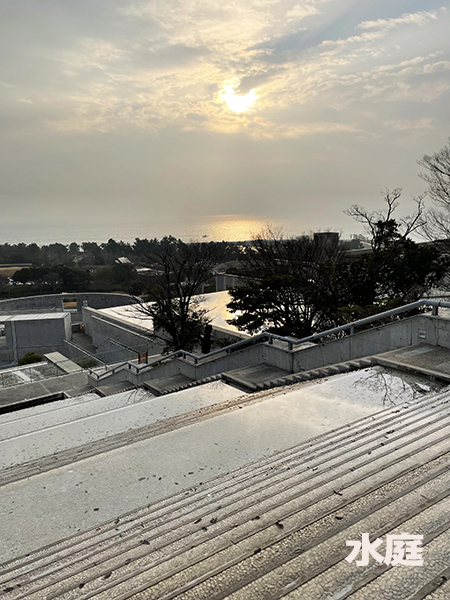
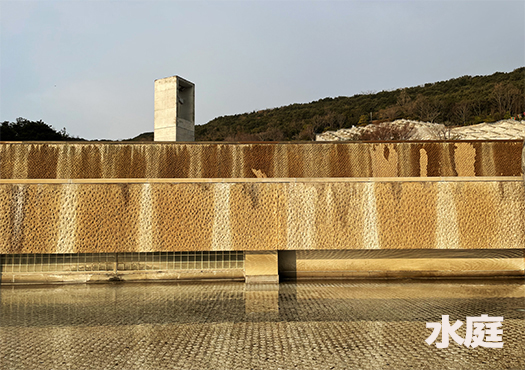
こちらは「水庭」と名付けられた空間。水底ではオホーツクのホタテたちがはるか故郷を思って水音を和らげていると思うと、つい情感が加わってくる。そうかそういう作戦か、いいね、みたいな。破壊された自然環境を再生するのには百万枚のホタテ貝のささやきがふさわしいと思えたりする。
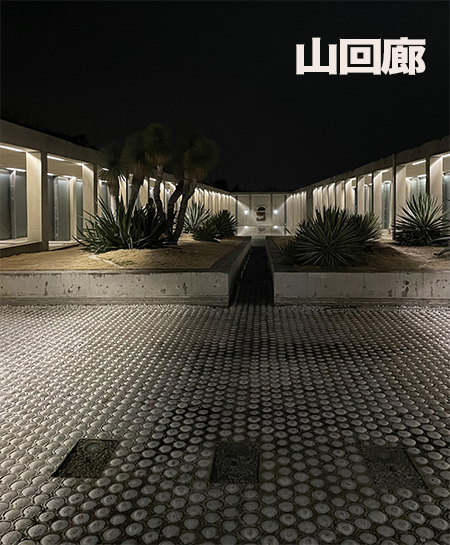
水底ばかりではなく、気がつくと至る所にホタテたちが地を覆っていることに気付かされる。北海道が少しでも役立っている、このように関西の人たちのメンタルに訴求し活用されていることは本当にうれしくありがたいことだと思えてくる。
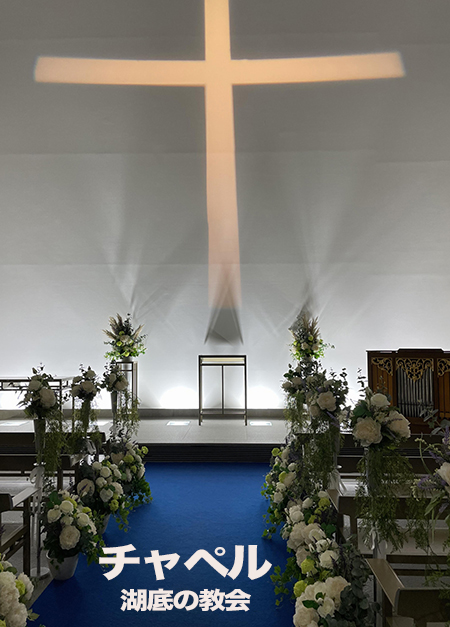
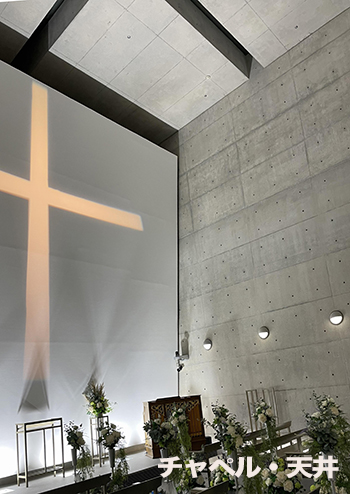
さらにそういう水底に十字の切り込みが行われ、その「湖底」にチャペル空間がある。湖底からの光は壁面のスクリーンに十字の宗教造形として反映されている。ゆらぎを感じさせるそういう造形感覚は、コンクリートという人工そのものの素材を使いながら、なお、自然を強く意識させてくれる。
関西圏と安藤建築作品、違和感と同時にやっぱり強い親近感(笑)。
English version⬇
[Musical landscape, 1,000,000 shells from Hokkaido also silently participate in Awaji Yumebutai – 6
A million scallop shells from Okhotsk, far from their hometown, demonstrate their fundamental power in the restoration of nature in Awaji. A heart-warming exchange between the Kansai region and Hokkaido. …
From the perspective of people in Hokkaido, Tadao Ando’s reputation is divided. At a time when Hokkaido was desperately trying to create highly insulated and airtight housing as a regional social movement, he was almost indifferent to thermal insulation and the like, and was pursuing the “aesthetic expression of the surface after it is released” from the formwork by leaving the concrete untouched. The information is like “pounding with a gun” for the sake of beauty. The sense of distance between the two, as if the insulating properties were not a priority.
We also hear fragmentary rumors that the owners of Ando’s houses are shivering from the cold. I have actually seen a photo taken by thermal imaging showing warm air rising “straight and perpendicular” to the house. Almost an outdoor thermal environment. It seemed to me that this was a way of thinking about the thermal environment space in a different dimension.
On the other hand, however, I also came across some facts that gave me a different impression from such information. For example, at Awaji Yumebutai, one million scallop shells that were discarded at a canning factory in Okhotsk, Hokkaido, are now reverberating with the afterglow of a second life, forming a fundamental landscape at the bottom of a 10,000 m2 water surface. It could be taken as an emissary from the nature of Hokkaido descending to Awaji. It is unclear why Mr. Ando’s design philosophy led him to focus on scallop shells as the greatest hidden hope for the restoration of Awaji Island’s topography, simply as a symbol of nature’s rebirth, or whether a larger meaning moved him. But as a Hokkaido native, he shows us this kind of “trick of the mind” that makes us feel a certain kind of excitement.
At the same time that I feel a sense of discomfort, I can’t help but feel a certain passion as an architect that appeals to my inner self. It is truly a dichotomous and ambivalent work. The photo above shows scallops in Hokkaido, which seem to be rustling at the bottom of the water. It is as if to say, “Oh, they are living a new life far away from Okhotsk.
This is a space named “Water Garden. The thought that the scallops of Okhotsk are softening the sound of the water as they think of their faraway homeland at the bottom of the water just adds to the emotion. I like that kind of strategy. The whispering of a million scallops seems like a fitting way to restore the destroyed natural environment.
Not only at the bottom of the water, but everywhere you notice scallops covering the ground. It makes me feel very happy and grateful that Hokkaido is helping, even if only a little, to appeal to the mentality of people in the Kansai region and to be utilized in this way.
In addition, a cross is cut into the bottom of such water, and the chapel space is located at the “bottom of the lake”. The light from the bottom of the lake is reflected on the wall screen as a religious form of a cross. This sense of form that evokes a sense of fluctuation makes us strongly aware of nature, even though concrete, a man-made material, is used.
The Kansai region and Ando’s architectural works are both uncomfortable, but at the same time, there is a strong sense of affinity (laugh).
Posted on 3月 3rd, 2023 by 三木 奎吾
Filed under: 住宅マーケティング, 日本社会・文化研究







コメントを投稿
「※誹謗中傷や、悪意のある書き込み、営利目的などのコメントを防ぐために、投稿された全てのコメントは一時的に保留されますのでご了承ください。」
You must be logged in to post a comment.